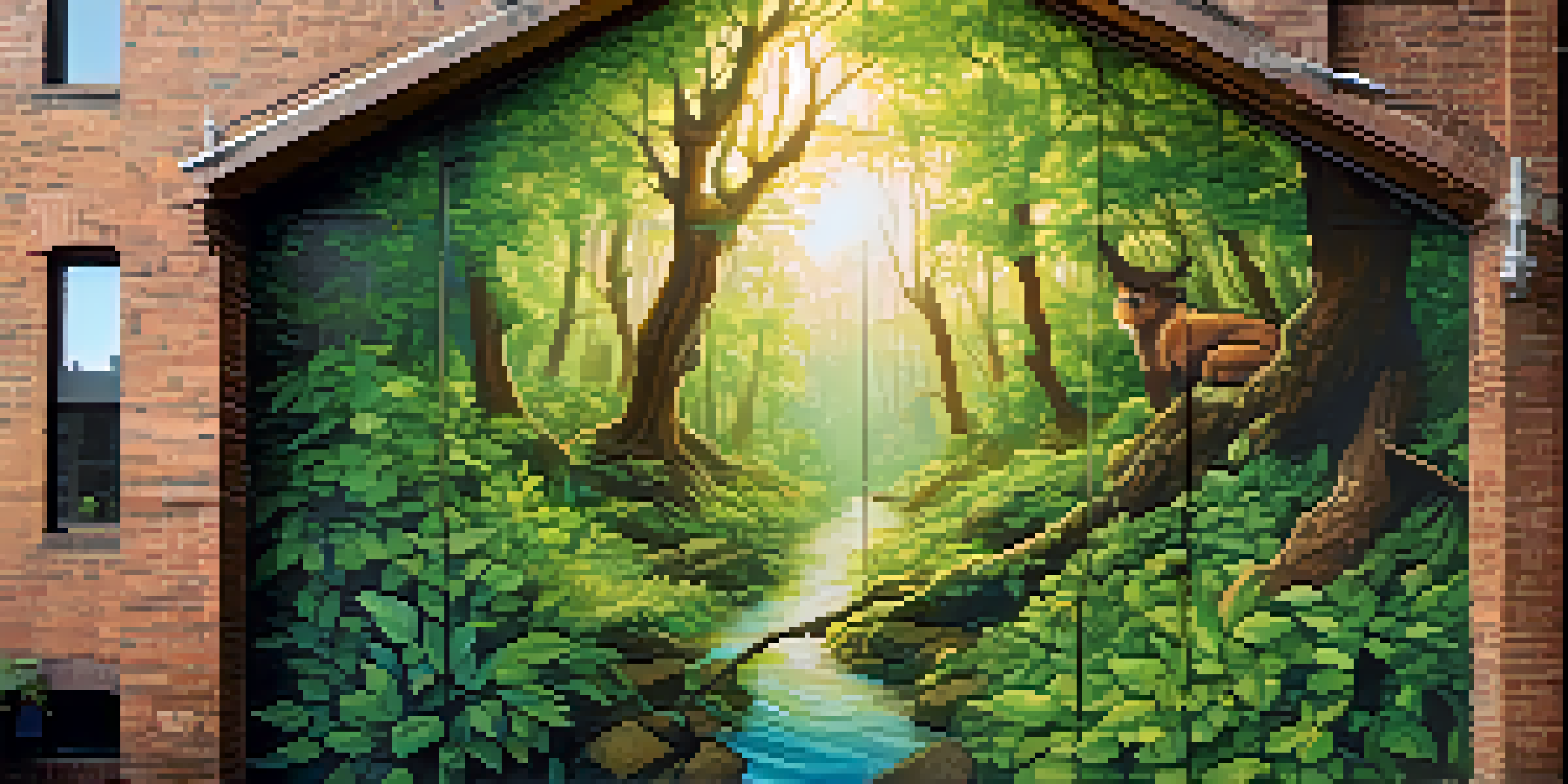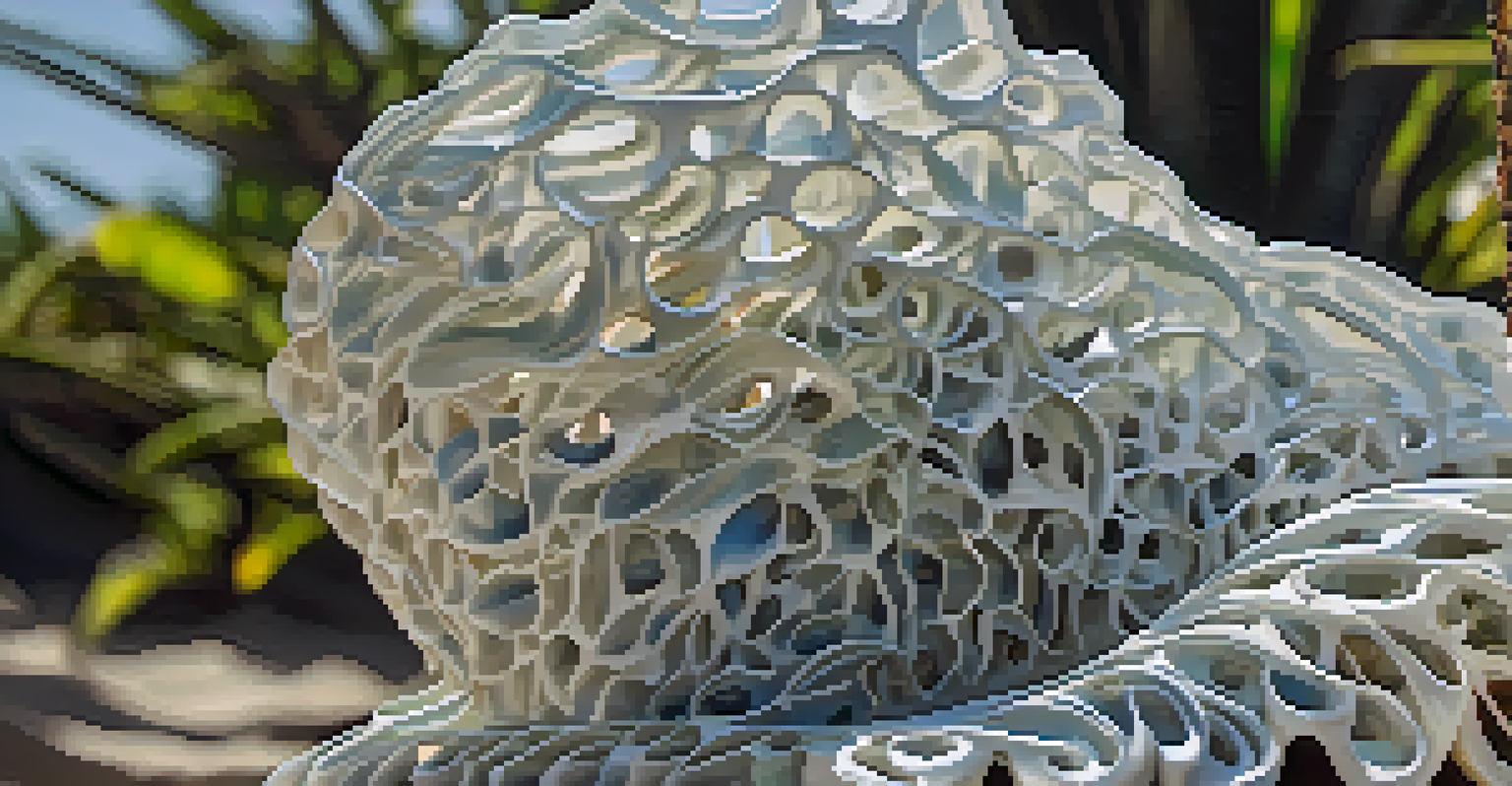Sustainable Art Practices: Creating with the Earth in Mind

Understanding Sustainable Art: What Does It Mean?
Sustainable art refers to artistic practices that prioritize environmental health and social responsibility. It encompasses everything from the materials used to the processes artists adopt, focusing on minimizing waste and reducing carbon footprints. Just like a gardener tends to their plants, artists can nurture the planet through their creative expressions.
Art is the most beautiful of all lies.
For instance, using recycled materials not only gives new life to old items but also reduces the demand for new resources. Think of it as a creative puzzle where every piece contributes to a broader picture of sustainability. This approach not only beautifies our spaces but also encourages a more thoughtful relationship with the earth.
Ultimately, sustainable art invites both the creator and the viewer to reflect on their impact on the world. It serves as a reminder that creativity can coexist with ecological mindfulness, urging us to consider how we can create without depleting our natural resources.
The Role of Materials in Sustainable Art
One of the cornerstones of sustainable art practices is the choice of materials. Artists are increasingly turning to organic, recycled, or upcycled materials to create their works. This shift not only lessens environmental impact but also tells a story of renewal and innovation.

For example, an artist might transform discarded ocean plastic into stunning sculptures, bringing attention to pollution while simultaneously crafting something beautiful. This practice not only raises awareness but also inspires others to think creatively about waste. It's akin to turning trash into treasure, showcasing how beauty can emerge from what was once deemed useless.
Sustainable Art Emphasizes Materials
Artists are increasingly using organic, recycled, or upcycled materials to promote environmental health and tell stories of renewal.
By consciously selecting materials, artists contribute to a circular economy, where products are reused and repurposed. This not only supports sustainability but also invites viewers to appreciate the narrative behind each piece, fostering a deeper connection to the art itself.
Eco-Conscious Techniques and Processes
Sustainable art practices extend beyond materials to encompass the techniques and processes artists utilize. Techniques like natural dyeing or even using solar energy can significantly lessen environmental footprints. Imagine the vibrant colors derived from plants instead of synthetic dyes; it’s a beautiful marriage of nature and creativity.
The greatest threat to our planet is the belief that someone else will save it.
Moreover, artists are increasingly exploring non-toxic mediums and methods, ensuring that their creative processes do not harm the environment. This awareness is similar to a chef choosing organic ingredients, where the focus is on quality and sustainability. By adopting eco-conscious techniques, artists not only protect their health but also champion the health of the planet.
Incorporating these practices can often lead to unexpected results, sparking innovation and creativity. Artists become explorers, discovering new methods that not only enhance their work but also promote a sustainable future.
Community Engagement and Collaboration
Sustainable art often thrives on community engagement, fostering connections between artists and their local environments. Collaborating with local communities can lead to projects that reflect shared values and concerns about environmental issues. It’s like a group of friends coming together for a cause, amplifying their voices through creativity.
For instance, an artist might work with local schools to create murals from recycled materials, engaging students in both art and sustainability. This practice not only beautifies the community but also educates and inspires future generations. When communities unite for a common goal, the impact can be transformative.
Art as a Tool for Environmental Change
Sustainable art serves as a powerful medium for advocacy, inspiring audiences to reflect on their environmental impact and take action.
By prioritizing collaboration, artists can amplify their message and encourage others to consider their own roles in sustainability. Together, they can create a ripple effect that reaches far beyond the initial project, fostering a culture of environmental awareness.
Art as a Medium for Environmental Advocacy
Art has long been a powerful tool for advocacy, and sustainable art is no exception. Artists use their platforms to address pressing environmental issues, sparking conversations and inspiring action. It’s similar to how a powerful song can ignite emotions and motivate change—a piece of art can evoke the same response.
For example, installations that highlight climate change or habitat destruction can provoke thought and stir emotions, encouraging viewers to reflect on their own practices. This form of advocacy transcends barriers, reaching diverse audiences and inviting them to consider their relationship with the earth. Art becomes a call to action, urging society to take steps towards sustainability.
By using their creativity to advocate for the planet, artists can engage viewers in meaningful dialogue about the environment. This approach not only raises awareness but also empowers individuals to participate in the solution.
The Impact of Sustainable Art on Society
Sustainable art practices have a profound impact on society, fostering a cultural shift towards environmental consciousness. As artists embrace sustainable methods, they inspire audiences to think critically about their own consumption and waste. It’s much like the influence of a good book that stays with you long after you've read it, prompting reflection and change.
Art can challenge perceptions, encouraging individuals to make more sustainable choices in their lives. Imagine a community inspired by an art piece made from reclaimed materials, leading them to organize clean-up events or workshops on recycling. This transformation illustrates how art can serve as a catalyst for societal change.
Community Collaboration Enhances Impact
Engaging local communities in sustainable art projects fosters shared values and amplifies environmental awareness through collective creativity.
Furthermore, sustainable art has the potential to influence policy and inspire institutions to adopt greener practices. By igniting passion and awareness, artists can play a pivotal role in shaping a more sustainable future for all.
Future Trends in Sustainable Art Practices
Looking ahead, the future of sustainable art is bright, with innovative practices continually emerging. Artists are increasingly experimenting with technology, like using augmented reality to create immersive experiences that highlight environmental issues. This intersection of art and technology opens new avenues for engagement and understanding.
Additionally, as sustainability becomes a central theme across various industries, more artists are likely to adopt eco-friendly practices. Just as fashion has embraced sustainable materials, the art world is following suit, creating a ripple effect that encourages responsible consumption. This trend signifies a collective movement towards prioritizing the planet in creative endeavors.

Ultimately, the evolution of sustainable art practices reflects a growing awareness and commitment to environmental stewardship. As artists continue to explore new methods and materials, they will undoubtedly inspire future generations to create with the earth in mind.